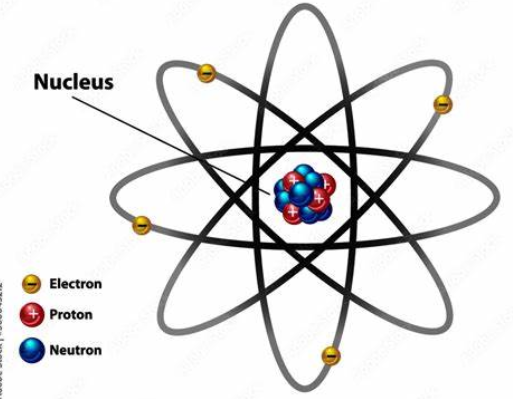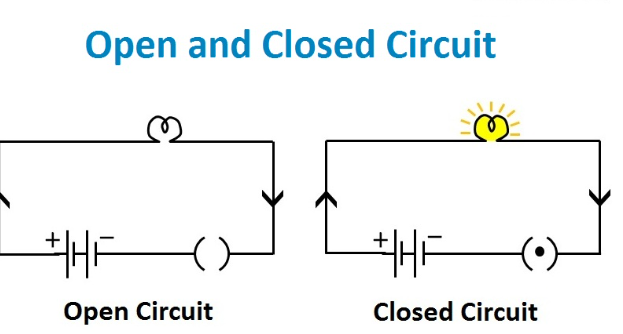Science 9- Unit 4
Charging by friction
/
When 2 neutral objects are rubbed together, the material that holds electrons better will become negatively charged, and the other material will become positively charged
To determine which material becomes negative, you must look at the electrostatic series (left)
Charging by friction (force between 2 surfaces) starts with 2 neutral objects and ends with both objects having opposite charges.
Protons- positive charges
Electrons- electrons are tiny particles that orbit the nucleus of an atom. They carry a negative charge and play a crucial role in chemical reactions and electricity. They are free to move to the positive terminal when voltage is applied, but are tightly bound to the nucleus in insulators
Charging by contact
Imagine you have a positively charged object (like a metal plate) and a neutral object (like a metal sphere).
When these two objects touch each other, some of the charges move between them. Electrons from the charged object transfer to the neutral object.
As a result, the neutral object becomes charged with the same sign as the charged object (positive or negative).
Unlike charging by induction (where the charged object doesn’t touch the other), charging by contact leaves a permanent charge on the previously neutral object.
Electroscope- an instrument that detects change. If a charged object touches the electroscope, a charge will transfer and cause the electroscope to be charged.
Charging by Induction
Imagine you have a charged object (let’s call it A) and a neutral object (let’s call it X).
Without touching them, bring A close to X.
The electrons in X shift around, creating a temporary charge separation. The side of X closer to A becomes oppositely charged.
When you remove A, the magic fades, and X goes back to being neutral.
Charging by induction lets you influence charges without direct contact.
If the opposite charge is positive, then the neutral object will want to move closer to that object. Vice versa if the charge is negative
Common conductors- copper, silver, gold
Common insulators- glass, plastic, wood
Note- Pure water will not conduct electricity. Tap water is a semiconductor
Perfect conductors have no resistance
Some metals can be superconductors when at extremely low temperatures
Lightning
In clouds, moisture that is rising collides with precipitation, knocking electrons off of the rising moisture, creating a charge separation. Negative charges build up on the bottom of the cloud and attract the positive charges. Lightning has a 30,000a
Current, Potential difference, and resistance
Coulombs- an amount of charge
Current (I): Imagine a flow of water in a pipe. In an electrical circuit, current is like that flow of water. It’s the movement of charged particles, specifically electrons, through a wire. Current is measured in amperes (A).
Potential Difference (Voltage): Think of a hill. If you roll a ball down the hill, it gains kinetic energy. Similarly, in an electrical circuit, voltage (or potential difference) is like that hill. It provides the push for electrons to move. Voltage is measured in volts (V).
So, in summary:
Current is the flow of electrons.
Voltage is the “push” that makes them move.
Resistance
Resistance is a measure of how difficult it is for electrons to flow through a conductor. Resistance also converts electric energy into other forms of energy, such as heat and light. Symbol: R Unit: ohm Ω
The four properties of a circuit that determine its resistance are
Type of Material
Diameter of wires ( The larger the diameter of the wire= less frequent collisions with the walls of the conductor
Length of Wires (The longer the length of the conductor, the higher resistance)
Temperature (the higher the temperature, the higher the resistance)
Resistors- Allow current to pass through but provides resistance, limiting the current
Switches and Variable Resistors
A switch allows a flow of electrons. When a switch is open, there is no flow. When the switch is closed, it allows electrons to flow. To change the flow of electrons, a Variable resistor, or rheostat is used
Modeling Voltage, Resistance, and Current
A waterfall is used as a model to demonstrate voltage. Waterflows when there us a change in the gravitational potential energy. Electricity will not flow unless there is a change in electrical potential (voltage)
The flow of water in pipes is used as a model to demonstrate resistance
Kirchhoff’s Laws
Load- anything in a circuit that converts electrical potential energy into another form of energy
Short circuit- if a circuit breaks and the current somehow is able to bypass the load and move to the other end of the circuit
Circuits have loads connected in a single pathway. The current is the same everywhere, even if the load has a lower resistance than the other. The voltage of the load will increase with the resistance at each load.
If a load has more resistance than another and the current is the same through them, then that load will release more energy
Parallel circuits
Parallel circuits have branched pathways, and will add currents when they all come together
Ohms Law
George Simon ohm, a mathematician, provided a link between voltage current and resistance. The unit of resistance was named after him.
Ohms law states that as long as the temperature stays the same, the resistance of a conductor will stay the same and the current is directly proportional to the voltage applied
V= I x R I= V/R R= U/I
V= Voltage in Volts
I= Current in amperes (A)
R= Resistance in ohms (Ω)
Batteries and Cells
An electrochemical cell consists of two different metals in contact through an electrolyte (a liquid with free-moving ions).
When these metals react with the electrolyte, they produce a potential difference (voltage) between them.
A group of connected cells is called a battery.
Dry Cells are dry because the chemicals used in them are in a paste
Electrodes (dry cells made of electrolyte paste)
Wet cells are made up of Zinc, Copper, or nickel
Non-Rechargeable batteries are called primary cells

Cost of energy
Cost= Price rate x Power x Time
Power- how many joules of energy are being used per second
Voltameters measure voltage difference. Ammeters measure current in amperes. Small currents are measured using galvanometers. Multi meters can measure voltage, current, and resistance in a circuit
Schematic or Schematic diagram
A source provides energy and a supply of electrons for the circuit
A conductor provides a path for the current
A switch mechanism controls current flow
A load converts electrical energy into another form pf energy (mechanical, electrical, chemical potential, and thermal)

Electrical safety
Short circuit electrons are caused by electricity trying to find the closest way to the ground
The dangers of electrical shock
High voltage power lines are 50,000 v
0.00 1a not felt
0.015 to 0.020 a shocked
0.1a Fatal
Insulators are not to be used with water, and their currents flow easily
.
Canadian Standards council
Pull on the plug, not the wire
Do not put anything into an outlet
Never remove the 3rd prong from a 3 prong plug
Simple electric motor and electro magnets
Armature- a motor or generator with coil wrapped around it
Commuter- Split ring that breaks flow for a moment, then reverses. (contact is broken at the magnetic field too. )
Brushes, reverse flow of electricity with coil, makes contact with the commuter by brushing up against it
AC or DC current
AC= alternating current DC= direct current
DC- Electrons flow 1 way, most battery powered things use DC
AC- Electrons move back and forth. This happens 60 times in wall outlets
Transformers- carrying wire is wrapped around 1 side of an iron ring called a core. This is the primary coil
Secondary coil- a wire that is wrapped around the other side of the core
Step down transformers- they reduce voltage. There are more windings on the primary coil, and there are fewer windings on the secondary coil
Step up transformers- they increase voltage. They have fewer wraps around the primary coil, and more wraps around the secondary coil
DC generator
Wind, Hydro-Electric, Steam driven, nuclear-coal, geothermal, and biomes